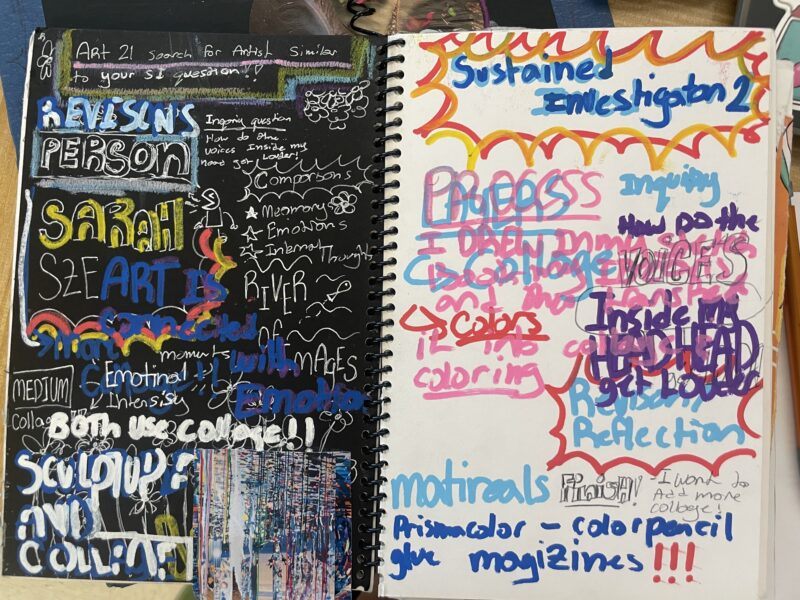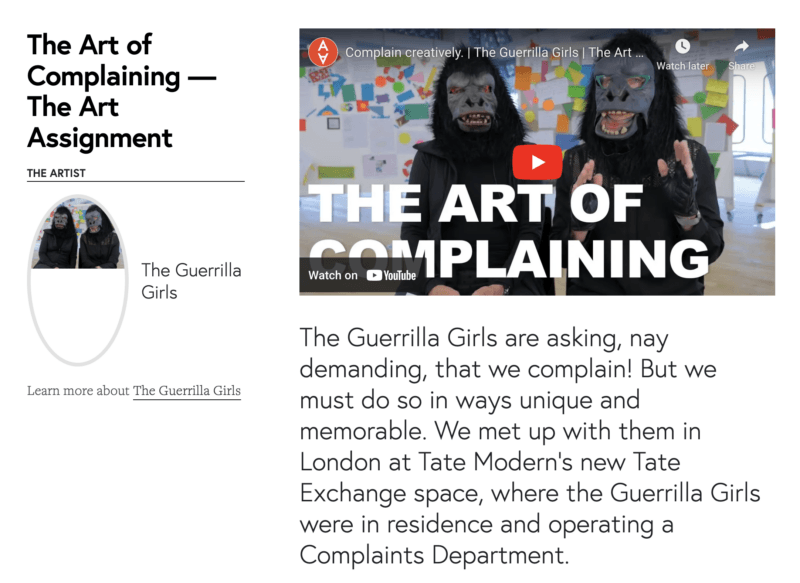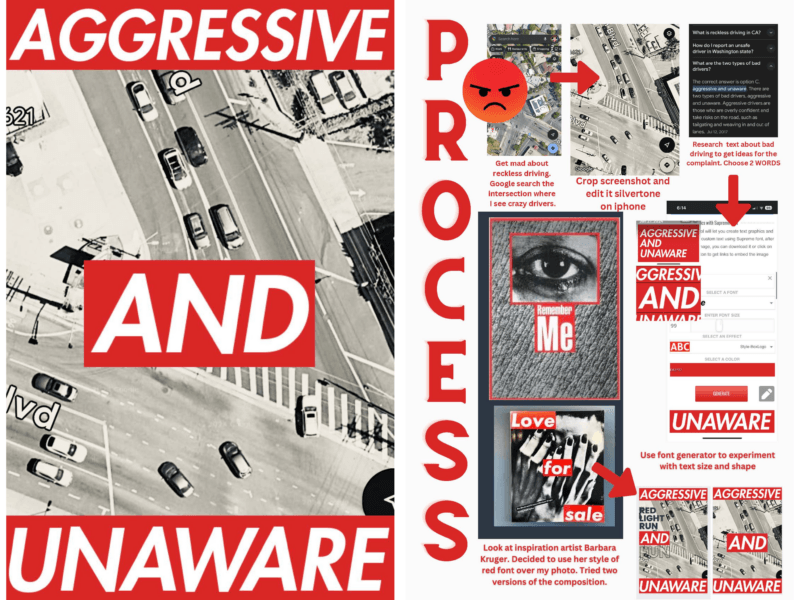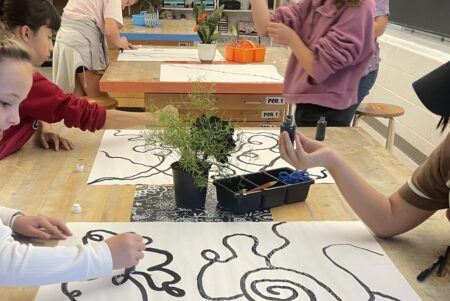Teaching with Contemporary Art
Channeling Rage into Artistic Action

Carved rage in a colleague’s classroom. Courtesy of Jess Perry-Martin.
Before we get into rage, backstory. For context, I teach AP (Advanced Placement) art at a public school in Los Angeles. We are an “AP for all” school, meaning any student, regardless of prior knowledge or experience, is welcome to take the class. There is no gatekeeping. We are inspired by the equity work of CreateCA.org, who share that ”students with an arts education are 5X less likely to drop out of school, 4X more likely to be recognized for academic achievement, 4X more likely to receive a bachelor’s degree and 30% more inclined to pursue a professional career.” My students have a wide range of skills, learning abilities, interests, and viewpoints. Art makes a difference in their present and future success. To pass the updated AP Art exam, students choose an inquiry or question that will inform a body of artistic work demonstrating synthesis through practice, experimentation, and revision guided by their choice of materials, processes, and ideas.
Does that sound like a graduate-level student thesis for teenagers?
You may have done all that and more for your own MFA. If so, kudos to you!
I want to help my (very pre-MFA) students to synthesize and apply these AP concepts. One strategy is using Art21 videos to hear from artists directly. Art21 allows students to observe artists practice, explain and/or use materials, and define ideas and artistic processes in action. We take guided notes (see examples) and discuss works to unpack and understand the way artists are thinking and making. I take notes with students and facilitate discussions after viewings, to connect with how students are thinking.

Teacher template for notes. Courtesy of Jess Perry-Martin.
This year, certain artists resonated, specifically around issues of representation, marginalization, rage, and complaining.
We watched some Art21 videos as a class, and students chose others based on the alignment to their own inquiry questions.

Student notes in response to the Extended Play film, Sarah Sze: Emotional Time. Courtesy of Jess Perry-Martin.
In our class discussions, students were particularly moved by Christine Sun Kim’s purposeful anger at the hearing world, American debt, and the ease of parenting in Berlin as compared with the United States. Students are processing the issues of the world, often craving space to share ideas and examine the depths of their ideas about specific topics. Artists Christine Sun Kim, Sarah Sze, Azikiwe Mohammed, Aliza Nisenbaum, Guerrilla Girls, and Pepón Osorio have been particularly meaningful in providing students insight into how artists tackle rage, identity, representation, and marginalization. This led to a desire to create space for them to share their rage specifically. We moved into a class viewing of the Guerilla Girls’ newest episode from “Bodies of Knowledge” and connected the video with their piece for the Art Assignment “The Art of Complaining.”

“The Art of Complaining.” Courtesy of Jess Perry-Martin.
To align this with the thinking for AP Art, I asked students to make a complaint artwork in any medium and document their artistic process leading to the final piece. I made a sample about an issue in my neighborhood, reckless driving, that has led to many deaths in the community.

Teacher artwork inspired by the icon of rage, Barbara Kruger, and my example of how to document thinking visually. Courtesy of Jess Perry-Martin.
As I shared my sample and how I came to generate my ideas, students discussed their own frustrations and concepts for how to complain. Complaints turned to rage and frustration, which has led to action, at least in issues where they have some sense of agency, like school/grades.

Student artwork Complaints about school pressure, societal pressure and demanding track coaches. Courtesy of Jess Perry-Martin.
And WOW. They are angry. And frustrated and brilliant. School is overwhelming. Society is crushing them with expectations. Too much homework, too many chores, unrealistic expectations from parents, friends, social media, coaches, and teachers. They are afraid of gun violence and feel ignored by elected officials. They have the ability to name it and articulate how they are thinking. They are ARTISTS. In reflecting on their work, students shared that they could see a space for applying these complaints into their AP Art portfolios, blending artistic approaches, and expanding their thinking. Many appreciated the opportunity to let out their frustration while exploring art-making and feel successful. At this point in the school year, students are struggling to sustain focus on their inquiry and the long journey of investigating a single question. Artful complaining got them thinking about issues they care about and re-energized them to apply that momentum. Rage can be fuel for creativity and a catalyst for change.

Student artwork of complaints about the loss of life due to gun violence and genocide.



